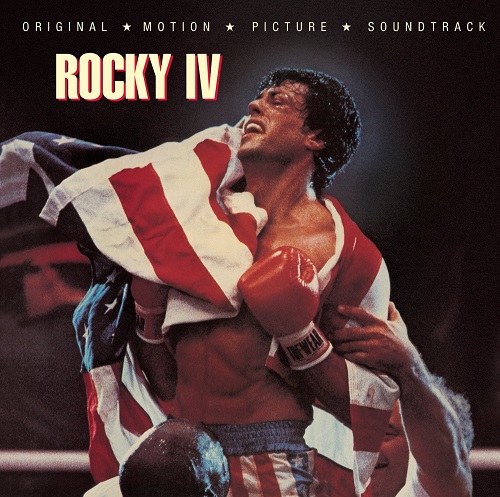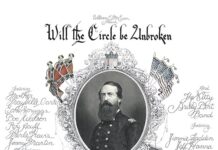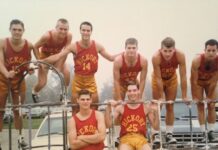“It ain’t about how hard you hit. It’s about how hard you can get hit and keep moving forward.” – Rocky Balboa
I don’t want to be a statistic. That’s why the Italian Stallion is guiding my weight loss journey.
The adage is true, it’s very easy to gain weight but quite difficult to lose it. Many make an initial commitment (a few weeks, a couple of months), but sooner or later food temptations start to rear their ugly heads (and delicious smells). And then, bam, it’s game over.
I’ve gone through this physical wellbeing roller coaster numerous times: in 2012 when I finally buckled down, joined a gym, and lost 30 pounds; in 2018 when diagnosed with Type 2 diabetes; and now in 2021 as I work to shed the pounds weighing me down as I return to an office post-pandemic.
According to the American Psychological Association’s “Stress in America” poll, conducted earlier this year and reported by the Boston Globe, 42 percent of people gained an average of nearly 30 pounds — with 10 percent gaining more than 50 — during the pandemic. Within my demographic (millennials), 48 percent reported an average weight gain of 41 pounds.
In the first year of the pandemic, my mind played tricks on me. Despite being noticeably overweight, I still walked the equivalent of hundreds of miles over several months, even with achy knees and flat feet. Pre-pandemic, I successfully completed 26-mile charity walks in 2018 and 2019 in nine hours apiece — each one encompassing the Boston Marathon route of eight Hub cities.
While 2020 was my most successful year professionally, my primary goal in 2021 has been to make myself better physically. As of writing this column, I’ve lost 30 pounds via the following methods:
- Cutting out as many salty foods and carbs as possible.
- Keeping sugars specific to certain fruits only (i.e. so long cake, candy, and ice cream).
- Listening to the Rocky IV soundtrack daily.
There’s no shortage of music to spur workouts (or, in my case, “walk outs”) but this album is near and dear to my heart because it’s the musical narrative for a movie near and dear to my heart. I’ve loved Rocky IV since I was a teenager. In fact, it was the first Rocky movie I ever saw, years before I started watching them in chronological order.
Films are rare where you find yourself rooting so strongly for an underdog. And the underdog in this case is Sylvester Stallone as the timeless Rocky Balboa. You marvel at how Balboa, seemingly sculpted of marble, can survive the fists of 6-foot, 5-inch Ivan Drago (Dolph Lundgren), a Russian machine who’s a beast when provoked in the ring. Chop at him and he only gets madder — like a bull on steroids (which his character essentially is).
The film has its moments of tugging at the heartstrings (like all the Rocky films do) as music underscores Balboa’s emotions, heart, and drive. Composer Bill Conti scored a Billboard Number One smash in 1977 with his uplifting “Gonna Fly Now.” Jazz legend Maynard Ferguson scored a Top 30 hit with the same song in the same year as he pumped his lungs into his trumpet’s uppermost register and gave Conti’s tune a disco feel. Watch the song fuel Balboa as he runs through the streets of Philadelphia — literally stopping traffic as the throngs try to keep up with him — and try not to have your heart swell. Or listen to “Conquest” from Rocky III (played during Balboa’s rematch against Mr. T’s Clubber Lang). If you weren’t aware this song was part of a film, you’d swear it was composed by Stravinsky, conducted by Bernstein, and blasted to the rafters by the New York Philharmonic.
The platinum-selling Rocky IV soundtrack, released in late November 1985 on Scotti Bros., has gotten me out of my desk chair, back outdoors, and eating right; trying to go the distance and shed as much weight as possible. Watching scenes from the accompanying film also get my adrenaline going, even if tears happen to stream down my face most times. The final matchup between Balboa and Drago is a work of art as composer Vince DiCola’s “War” is the perfect amalgam of Europe’s “The Final Countdown” and Vangelis at his most musically intense. The film’s “Training Montage” (also by DiCola) showcases the dichotomous body sculpting methods between both fighters — the primal, back to basics, DIY workouts of Balboa versus the controlled, lab experiment mentality of Drago. Throughout the film, DiCola’s synthesizer melodies not only convey the building storyline between both fights, but essentially the entire Cold War conflict between the US and USSR.
Side note, if there’s a better workout video than Stallone sweating and glistening in a secluded Russian barn and climbing atop a mountain without a guide or compass — all to the tune of John Cafferty’s “Heart’s on Fire” — then I’ve been living under a rock my whole life.
“Judging from all the positive feedback I’ve received for that score over the past three-plus decades, I guess I did okay,” DiCola told me recently via email. “Seriously, scoring Rocky IV really was the opportunity of a lifetime for me and I’m so grateful. The music has achieved a level of longevity well beyond what I ever expected or imagined.”
Rocky IV, which will reportedly be re-released as a Director’s Cut version, is the most successful of the Rocky franchise (grossing more than $300 million worldwide). The Rocky IV soundtrack stands out as a landmark 1980s release as it boasts three Billboard Top 40 hits (Survivor’s “Burning Heart” (No. 2), James Brown’s “Living in America” (No. 4), and Robert Tepper’s “No Easy Way Out” (No. 22) as well as a Number One anthem (six weeks) that serves as the entire musical lynchpin of Rocky III (Survivor’s Oscar-nominated “Eye of the Tiger”).
“What was happening was Footloose and Top Gun — these movies were coming out that had songs, not just a symphony score,” says music producer and co-writer of “Heart’s on Fire” Ed Fruge. “Sylvester and [music supervisor] Robin [Garb] were very aware of this, so they wanted to try something different than just using the big guys that do the big scores.”
“I think it’s a great soundtrack,” adds Charlie Midnight, co-writer of “Living in America.” “In those days, suddenly the bulb went on for everybody that…soundtracks could sell a ton. ‘Let’s put popular artists on it; great writers on it’. In that sense, as an album of songs, it’s a great album. They went to great people.”
“The soundtrack to Rocky IV was spectacular, more powerful than the Rocky III soundtrack as a whole. There was a lot of synthesizers, there was a lot of dynamite drums, backbeat, very exciting!” Jim Peterik, of the Ides of March, formerly of Survivor, and of .38 Special fame, tells me. “I think they really put their best foot forward to create a contemporary rock album.”
“I thought the soundtrack was incredibly solid. Incredibly solid because it holds up really well,” says Robert Tepper. “All those songs are still pretty popular and classic.”
While the Rocky IV soundtrack also features the talents of Kenny Loggins, Gladys Knight and “King of Wishful Thinking” duo Go West, 80 percent of the album is what’s keeping my legs moving and determination at the top of my mind. These songs are the focus of this column, which chronicles how they came to be by the artists who wrote and/or performed them. To them, I extend my thanks for literally whipping me into shape!
***
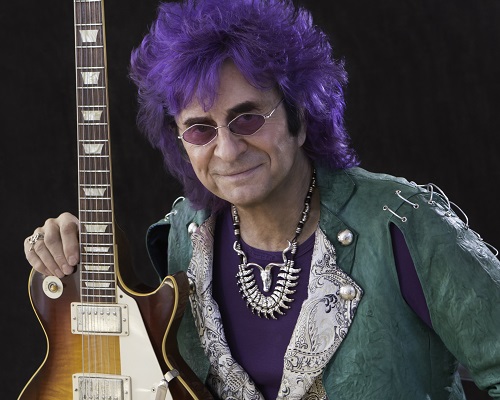
“The unmistakable fire”
Jim Peterik and his former songwriting collaborator, Survivor’s Frankie Sullivan, weren’t sure they could catch lightning in a bottle twice. But they were going to try.
The pair was on the road with Survivor, enjoying major chart success and touring with REO Speedwagon, when Sullivan received a call from Sylvester Stallone. The mission was handed down, compose a song for the new Rocky film based on a copy of the movie script.
“We didn’t have the luxury of a rough cut of Rocky IV but each of us had a copy and we ate it voraciously,” Peterik told me recently. “A few days later we rented a suite at the hotel; we brought up a Wurlitzer piano from the equipment truck; and we hit it.”
One four-hour session yielded most of the track “Burning Heart,” said Peterik, also hailed as the writer of “Vehicle” by the Ides of March and co-writer of the classic .38 Special anthem “Hold On Loosely.”
“We were very intrigued by the plot of Rocky IV. Yes, it was two fighters, but it was also two nations, two ideologies, Russia and America…At the time there was still a Cold War going on,” he said. “So you had this dichotomy of the two fighters going in the ring, but also two cultures clashing. That was just a great angle that we seized upon. And that just started the whole lyric flowing as we pounded away at the Wurlitzer piano.”
The song demo was originally entitled “The Unmistakable Fire” and instead of the hook of “burning heart,” the initial lyric sung by Survivor vocalist Jimi Jamison was “human heart.” While Stallone “loved the song,” Peterik and Sullivan would soon trek out to Los Angeles to tweak some of the lyrics and add more musical punch to the track. Start to finish, the whole process took approximately three weeks.
“Bingo, we mixed it up and sent it to Stallone. He said, ‘You got it. You really got it’,” Peterik said. “Next thing you know the movie comes out and we’re on the red carpet again.”
The pair had no idea how their song would be incorporated into the film. “Burning Heart” plays as Rocky Balboa touches down in near-arctic Russia to begin training for his fight against Ivan Drago, unsure of his surroundings and future.
“We saw it at the premiere…There’s a little bit of applause, no big whoop-de-do,” Peterik said. “It wasn’t until I snuck into a theater back in Chicago…and I sat in the back row and the place was packed and ‘Burning Heart’ comes on and the place goes crazy. That’s the real people.”
Turns out Peterik and Sullivan offered another song for Rocky IV, a ballad entitled “Man Against the World.” The song is not included in the original film.
“(Stallone) hinted very broadly, ‘Hey, you could try a ballad too.’ Well, that’s all we needed to hear,” Peterik said. “And we wrote ‘Man Against The World,’ which … probably between “The Search is Over” and that are the two favorite rock ballads that I’ve co-written. (Stallone) was crushed that he couldn’t use ‘Man Against The World’ in Rocky IV.”
“’Burning Heart’ is a very special song to me because it kind of proved that we could catch lightning twice in a bottle,” Peterik adds. “We really caught magic with ‘Eye of the Tiger.’”
The origin of “Eye of the Tiger,” carried over for the Rocky IV soundtrack, stems from Stallone’s love of Survivor (then recording for Scotti Bros.), especially their song “Poor Man’s Son” off the group’s 1981 album Premonition.
“It didn’t raise a goose bump until he heard [singer] Dave Bickler’s voice. He said, ‘That’s what I want; something from the street — just like that,’” Peterik said. “That was his direction to us — ‘With a song for Rocky III, I want you to write something from the street. Something with a pulse. Can you help me out?’ I’ll tell ya, we just went to town.”
Like “Burning Heart,” the first songwriting request handed down from Stallone came via an initial phone call.
“I got home and on my answering machine I hear, ‘Hey, yo, Jim, that’s a nice answering machine you got there. It’s Sylvester Stallone, give me a call.’ And I think somebody’s putting me on. Long story short, my wife made me call him back and sure enough it was him. And he said, ‘I love your band Survivor. Tony Scotti, your record company president played it for me, and that’s the sound I want.’ He said, ”Gonna Fly Now”…nice song, but I want something for the kids. Something with a pulse.”
Stallone would provide Peterik and Sullivan a rough cut of Rocky III to spur their songwriting. The duo rented a Beta Max pro to watch the film and “the rest is history,” Peterik says.
“Eye of the Tiger,” in addition to hitting Number One for six consecutive weeks in 1982, would garner the duo an Academy Award nomination for Best Original Song. They would lose to “Up Where We Belong” from An Officer and a Gentleman.
“It was kind of bittersweet because I had my acceptance speech all ready. In fact, I have it framed. I never got to say it because “Up Where We Belong” won the Oscar,” he said. “The saving grace was that we won a Grammy that year for “Tiger” and that made it OK.”
With “Burning Heart,” the goal was “to kind of capture the flavor of “Eye of the Tiger” but not rip it off,” Peterik adds. “We went to Japan right after “Burning Heart.” The Japanese were really into “Burning Heart.” In their version of English, they were just shouting “Burning Heart.” It seemed like it was more popular than “Eye of the Tiger.” I have no explanation for that, but they were rabid about “Burning Heart.””
Peterik describes the experiences of working with Stallone as still standing out among his top career milestones.
“We were so respectful of Stallone from the first two [Rocky] movies. I just realized what a genius he was as a script writer and as an actor. He never put us in that position of pressure. He was always very laid back,” he says. “It was a major rush for us at the time and remains that when I think about it. I was just incredibly lucky to be involved in such iconic movies.”
***

“Burnin’ with determination to even up the score”
Composers Ed Fruge and Vince DiCola began as small-town musicians. It wouldn’t be long before they would become big names in Hollywood.
“Vince and I hit it off because we were both from small cities — he was from Pennsylvania; I was from Louisiana — and we just hit off because we were both keyboard players and … we were both pretty humble,” Fruge, a native of Lake Charles, Louisiana, told me. “We felt blessed and grateful through this whole process.”
Trying to establish a music career in Los Angeles as one-third of a band called Cajun, Fruge would eventually open his own studio in Lake Charles and join forces with musical comrade DiCola as backup musicians for Sylvester Stallone’s brother, Frank Stallone, then on a career high with “Far From Over” from the Saturday Night Fever sequel Staying Alive. Frank’s manager at the time? Robin Garb, music supervisor for Rocky IV.
“Suddenly that’s a wonderful combination,” Fruge said. “I’ve got a recording studio. We’ve got a manager who’s a music supervisor.”
Garb would provide Fruge and DiCola with a screenplay for Rocky IV. From this, the pair crafted a three-song demo for the film — instrumentals “War” and “Training Montage,” and a soulful yet pop-laden track called “Heart’s on Fire.”
“We kind of envisioned the way this would go,” Fruge told me. “We would take Sylvester Stallone to some restaurant in Malibu; then take him to Scotti Bros. studio where we ended up doing a lot of the work; and playing the song for him and blowing him away. But that’s not how it happened.”
It would be Garb who would get Stallone pumped about the duo’s work.
“He asked Robin, ‘Who should we get to do the music for Rocky IV?’ Of course, Robin mentions everybody but us. But he had this Sony Walkman cassette player, and he had our tracks with him. And after he mentioned everybody to Sylvester, Sylvester said, ‘No, I just don’t see a fit there,’” Fruge recalled. “Robin said, ‘Can I play something for you?’ And he said, ‘Sure.’ He put the headphones on and then he played those three songs. Sylvester just started jumping up and down saying, ‘I want these guys to do the film!’ He said, ‘Who are these guys?’ And Robin said, ‘Well, it’s Ed and Vince with Frank’s band.’”
Garb dialed Fruge from a Burger King payphone to alert him and DiCola about the news. After initial euphoria, reality set in.
“Vince and I were jumping up and down because we never did a television movie. We’re going right into a $28 million dollar franchise [with] Rocky IV,” he said. “After we started calming down, we said, ‘What have we gotten ourselves into?’ Robin was very honest with (Stallone) and said, ‘These guys haven’t done this.’ He said, ‘Get them whoever and whatever they need. I want these guys to do the score.’ So that was kind of a huge moment for us.”
“When I got the call that they wanted me to score the movie, it was one of the most surreal moments of my life…and also one of the scariest!” adds DiCola. “Imagine…you’ve never scored a film before, and your first composing job is for the fourth installment in one of the biggest movie franchises of all time! Now it was time to see if I could rise to the occasion.”
Though John Cafferty would ultimately be the artist who helped “Heart’s on Fire” come alive in the film and on the soundtrack, the first act to attempt the song would be Go West (singers of “One Way Street” across both mediums).
Despite the group’s attempts and frequent assurances of ‘We got this,’ their emotionality behind the song did not match the mood of the film, according to Fruge. In Rocky IV, “Heart’s on Fire” plays as Rocky Balboa trains intensely in Russia with wife Adrian looking on. Stallone would confirm what the duo feared after several weeks of work — fantastic attempts, but the current version “doesn’t work with the film.”
Per Fruge: “We’ve got a clear line of sight. We can see them all at the studio console and they’re watching the film. I’m telling Vince, ‘Seventeen seconds; it’ll be interesting to see how Sylvester looks at this.’ And sure enough they started it up and everybody’s juking and jiving, man. Sly is loving it and then here comes the Adrian scene and he looks at it and then he says, ‘Stop!’ And then he looks at Vince and I — we’re waiting for that moment, right — and he says, ‘Excuse me,’ and he walks out into the hall and Robin went with him and he said, ‘Doesn’t work with the film.’ And I said, ‘Yeah, we noticed that.’”
The decision is then made to go with Cafferty, best known as the singing voice (“On the Dark Side”) behind the character Eddie Wilson from the film Eddie and the Cruisers. Cafferty, then on the Scotti Bros. label, happened to be in town when this all went down.
“Go West, they looked like deer in the headlights. They’re looking at us while we’re talking to Sly,” Fruge said. “All we could say was, ‘We got this.’”
However, Cafferty’s attempts at recording the track took some time. The voice on the pair’s original demo belonged to singer and co-writer Joe Esposito.
“This song was in a higher key than John was used to singing. But the good news is he’s a barroom singer. He came from the barrooms,” Fruge said. “Once he gets warmed up, he could hit some notes, but…the first few takes he just couldn’t sing it. So we just kept encouraging him. We were there from probably 2 o’clock until almost 2 o’clock in the morning. It was a long session, but we got what we needed from him.”
Attempts to reach Cafferty for this column were unsuccessful. Even though Cafferty’s version of the song would only peak at Number 76 on the Billboard Hot 100, “Heart’s on Fire” stands out for a unique reason in Rocky IV.
“The song ended up getting used twice in the film, which was great for us as songwriters and music producers,” Fruge told me. “It was used during the training montage and also at the end credits.”
Fruge adds that Cafferty’s vocal abilities and dedication to the track ultimately made him the right choice to elevate the track to iconic status.
“He was dedicated to it; he was going to get it done. That’s a long session to have a guy in there singing,” he said. “He just got better as we pushed him. He … was able to hit the high notes and give it that rock edge that we really needed. I think it was perfect.”
***
“DLYA SEBYA!” (“I FIGHT FOR ME!”)
Arguably the greatest scene in Rocky IV occurs when Rocky Balboa and Ivan Drago finally face each other and trade punches in Moscow. The Russian crowd is ready for blood; at first, it’s Balboa’s. Ominous instrumentals build up both fighters’ ring entrances and then for two rounds, they square off. Impressive enough considering Balboa’s one-time rival and now close friend Apollo Creed doesn’t even last a full two rounds in his film bout with Drago earlier on.
For Rounds 3 through 14, injuries pile up but neither fighter backs down. Even the clanging of bells (physical and synthesized) don’t stop them. It’s a true David versus Goliath matchup emphasized by Ed Fruge’s and Vince DiCola’s icy, militant piece “War,” one of three tracks composed by the pair for the film’s soundtrack. As Balboa claims victory in Round 15, DiCola pays tribute to composer Bill Conti by playing a snippet of “Gonna Fly Now” as a testament to Balboa’s endurance and heart.
Where other Rocky films seem to take their musical cues from classical symphonies, Fruge and DiCola, being keyboardists, would lean heavily on synthesizers as their primary instrument of choice for scoring the film.
“By the time Rocky IV came about, synthesizers were big. That was in a lot of the music. And I think that’s what really sold Sly on it. He was looking for that, but he didn’t see it coming,” Fruge told me.
“When synthesizers came, it allowed us to play anything. You could play brass parts; you could play percussion parts; you could play drum parts. With the advent of polyphonic synthesizers, we began to be able to create all these new sounds instead of just playing a piano part.”
In terms of going the distance on making the music for the film, Fruge said he and DiCola “were part of the entire process.”
“While we’re in there, we’re getting reaction from Sly,” he adds.
“I campaigned for months to get the job of scoring Rocky IV, never believing for one second that I’d actually get the gig. That turned out to be a really good thing because I was unencumbered to do whatever I wanted with the music,” adds DiCola. “I didn’t have a director [or] producer … breathing down my neck so it was a very freeing experience. And I think that’s reflected in the music. When you feel like you have nothing to lose the pressure is off and you have the opportunity to have fun creating new music. And sometimes the result is some of a composer’s best work!”
Fruge adds he and DiCola knew what sounds and styles Stallone needed to hear to capture the essence of his characters and overall storyline.
“We knew that Sly was very used to big symphonic scores and we knew that we had to come up with powerful scores,” he said. “The original “War” piece, we recorded that in my studio. We didn’t have a 117-piece orchestra; we had a 17-piece McNeese State University jazz band. We brought them in and we triple tracked them so that we had 17 times three. That’s how we made that score sound symphonic.”
Another instrumental trick the pair perfected during their writing sessions involved recording all synthesizer parts twice and then slowing tape down slightly when layering in a second track.
“We would record one for the right, one for the left. And what it did by using that technique is the synthesizers sounded huge and they had, for lack of a better term, a chorus effect. But it was not by running it through a chorus; it was done by actually manipulating the speed of the machine when we did the second copy of it,” Fruge said. “We took the time to try to make these synth parts extremely accurate and doubled them and chorused them and then utilized the symphony that we had.”
Though the pair would eventually have a real orchestra add symphonic flourishes to their tracks, Fruge credits a music virtuoso, sound designer Casey Young, with employing specific synthesizer wizardry across the film and album.
“We had a true synthesist guru. We had met him while we were in LA. He became part of the sound. That’s what we brought to the table,” he said. “Vince and I had a very keen insight in terms of what we wanted to hear; he would deliver it. He’s an important part of this. He wasn’t a songwriter or a producer, but he was our synthesizer guy.”
Fruge’s Lake Charles studio would serve as creation station for the duo’s three tracks, a move that proved to be both economical and practical. Though the ideas for “War” and “Training Montage” would essentially remain intact, additions were created for both to fit the length of the film scenes they were utilized in. The best example in Rocky IV where classicism and the modern music era merge occurs when Balboa scales a mountain to evade his Russian chaperones and repeatedly screams “DRAGO!” at the top of his lungs.
“It took Vince and I probably three weeks to do the demos, but we had my recording studio the whole time. This was the whole reason I built the studio — this is what I had always hoped would happen,” Fruge said. “We were able to make these three demos which would have probably cost $60,000, $70,000 for zero. Ultimately MGM paid us back studio time for those demos because they went on the record.”
From composition to final mixing, the pair would send approximately eight weeks assembling the music that would cement their resumes for decades to come.
“I think we had four sessions where we did not get sleep for 48 hours to get the work done because it needed to be done,” Fruge said. “We were always kind of pushed, but Vince and I were very passionate about this because it’s something that was such an amazing thing that came our way. We had no doubts. Whether we were tired or sleepy, we just got it done.”
Despite Stallone’s Hollywood A-list status, Fruge adds the actor’s personality was like that of the everyman — likely testament to the fact Stallone himself was once an underdog as he pitched out the concept of Rocky to studios a decade earlier.
“He’s a remarkable person. I didn’t know what to expect. He was very kind to us,” he says. “We’re unknown but we’re talented, and he was talented. I think he saw in us what he first was. Vince and I were very blessed.”
***
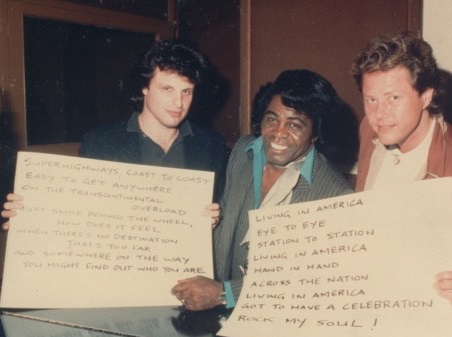
“You may not be looking for the promised land … but you might find it anyway”
It isn’t as overtly patriotic as, say, Lee Greenwood’s “God Bless the U.S.A.” but “Living in America” had enough power and punch to give the Godfather of Soul his first Top 10 hit in 17 years (and the last one of his career). It may also be the greatest song with a 4/4 beat to power walk to … along with Queen’s “Another One Bites the Dust.”
The song also helped cement the talents of songwriting team Dan Hartman and Charlie Midnight. Hartman handled the music. Midnight, the words. Midnight, who has since produced and written songs for more than 30 films (The Bodyguard and Bull Durham included) and has worked with everyone from Barbra Streisand to the Doobie Brothers, describes Hartman as “my mentor” who “really gave me a career. He was truly a certified genius.”
The pair got their start writing the song “Heart of the Beat” (and singing it under band moniker 3V) for the 1984 film Breakin’. This led to contact from Rocky IV music supervisor Robin Garb about composing a song for Sylvester Stallone’s new film. In the finished product, “Living in America” plays as a precursor to overconfident Apollo Creed’s exhibition matchup with Ivan Drago. James Brown essentially serves as master of ceremonies pre-fight.
The pair would trek to Los Angeles to meet with Stallone and toss around ideas based on a scene description.
“We wrote it specifically for the film and we were very careful about that,” Midnight told me recently. “We went out to see Sylvester Stallone on the set and … Stallone did talk to us about the song and the type of spirit he would like. He was really wonderful. He said, ‘You guys are the songwriters and you know what the scene is — do your thing,’ which was really a pleasure to hear. He had a lot of respect for songwriters. We just went off and wrote the song.”
“I was staying at an apartment building behind Spago and I sat around the pool. I just started thinking about how I wanted to write the lyric,” Midnight adds. “I wanted to write a lyric that was more about the vista, the landscape. Not that I’m not patriotic, but I didn’t want to write a ‘rah-rah’ song. I still wanted it to have the feeling of ‘It’s great to be in America.’ So I wrote about the landscape, basically.”
Midnight’s lyrics would get passed over to Hartman who would compose the primary track in his Westport, Connecticut home studio.
“He just did this amazing demo, which he also sang — Dan basically could do anything — and sent it to Mr. Brown and to all the other parties involved. They loved it,” Midnight says. “Dan really made a demo that would sell the song based upon what we were told the scene would be like. The final song was different, of course — it had James Brown’s vocal — but basically the demo was, ‘Boom, that was it.’”
From there, the pair would set up shop at New York City’s Unique Recording Studios and work directly with Brown laying the track down.
“The first time I met Mr. Brown, we were in the studio ready to record. He came in with an entourage,” Midnight recalled. “It was very interesting because he came to me and he said, ‘You boys wrote my life,’ which, to me, was an amazing compliment.”
Yet despite Brown’s legendary status in the music industry, Midnight quickly got to work helping Brown properly learn the lyrics to his and Hartman’s song.
“I had to go over some of the words with him because he hadn’t really remembered it,” he said. “This is amazing — I got all these huge sheets of paper and I wrote out all the lyrics because I have great penmanship and…went through it with him as he sang it until basically he got it. That was amazing, to actually be standing next to James Brown when he was recording. The one thing I do remember is being in the studio when he was recording the vocal and thinking, ‘If only the guys in the old neighborhood could see me now.’”
Brown would ultimately sign one of these sheets for Midnight who calls it “one of my most treasured possessions.” After this experience, Hartman and Midnight would write Brown’s 1986 album Gravity, released on Scotti Bros., with the former producing it.
“He came in the studio and he was great. He’s James Brown. You’re not really producing his vocal,” Midnight said. “He was wonderful at taking certain suggestions. Really, really cooperative. Easy to work with. He was a pleasure.”
For “Living in America,” Midnight adds it was Hartman’s idea to add a Brown signature lyric to the end of the track.
“After we had all the takes that we wanted, Dan had asked me, ‘You think I can ask him to say ‘I feel good’ at the end?’ That’s a patented phrase of James Brown. And I said, ‘Yeah, ask him.’ And he did it,” he said. “There was no pushback at all.”
Surprisingly, Brown isn’t the only legend performing on the song. That guitarist you hear (in the background no less!) is none other than virtuoso Stevie Ray Vaughan laying down his best sideman work since David Bowie’s “Let’s Dance.”
“Stevie Ray walks into the room and he’s Stevie Ray. Full regalia. Picks up that guitar and…,” Midnight says. “It was wonderful to be in the room with him.”
Once complete, the song was sent to Stallone for feedback (and potential criticism). The pair received silence in return, which ultimately spoke volumes.
“Basically, you do your thing. That’s why you’re being hired. Obviously if he didn’t like it — he’s very strong in his points of view — we would have had to go back and redo it. But fortunately for us everybody seemed to be cool with it,” Midnight said. “We sent the song out to everybody and it just came back. We didn’t get any suggestions or notes. Nothing. It was sort of a dream gig in that sense. No matter who you’re working for, there are notes that come back from the artist. But no, everybody thought it was cool.”
“Living in America” would win a Grammy for Best Male R&B Vocal Performance. The song even proved popular enough to warrant a “Weird Al” Yankovic parody entitled “Living With a Hernia.” Yet the notion of hit potential for their song was not lost on either Hartman or Midnight. Along with writing and singing the classic Edgar Winter Group staple “Free Ride,” Hartman scored solo hits with 1978’s “Instant Replay” and the 1984 Top 10 hit “I Can Dream About You.” He would pass away in 1994 at age 43.
“That’s why they called on us and particularly, Dan Hartman. (Dan) just crossed all genres and was amazing,” Midnight told me. “Of course, we did think about it. They wanted a team that could possibly get something on radio. They were very specific about that. We were definitely trying to nail something that could be a hit with a simple enough chorus that had meaning. When I wrote the lyric, I was really thinking about that; to have singable words that also would have some impact.”
Ultimately, Midnight and Hartman’s song — like many others on the Rocky IV soundtrack — would dominate the film for several minutes. For the previously described James Brown scene, Hartman and Midnight would have a ringside seat in Las Vegas watching it be shot live.
“It was really an amazing, amazing gig. Sylvester Stallone flew us out to Vegas where they recorded the scene. We got together with James Brown and went over things with him, and he got up there and sang it,” Midnight said. “This one was really easy in terms of how it all went down. Obviously, the work is the work, but for me being in Las Vegas at the MGM Grand and being there in the middle of it and watching James Brown up on stage and doing the song and all of the dancing that went around it and the people involved — for me it was a once in a lifetime experience.”
“I’d love to have it again,” he quickly adds.
***
“You give me strength to know myself”
Though probably best known for helping put the phrases “If you want my body and you think I’m sexy, c’mon sugar tell me so,” and “Young hearts be free tonight” in the mouth of Rod Stewart, iconic songwriter Duane Hitchings went into fighter mode to pen “The Sweetest Victory” with songwriting partner Jake Hooker for the Rocky IV soundtrack.
The song, not included in the film, is still a standout track as it recalls all things terrific about over-the-top 1980’s music — a catchy synthesizer melody; driving drums; hard guitar; anthemic lyrics; and polished vocals that all but shatter glass. It’s a crime the song isn’t at least playing during a Rocky Balboa training montage given its lyrical intensity and introspection.
To record the song, Hooker would organize musicians as a band called Touch, Hitchings said. Beyond that, details about Touch prove scarce. One online music forum makes the claim BulletBoys frontman Marq Torien sings lead on the track (I remain unable to confirm: an email to band management remains unanswered). Yet on first listen you may find yourself automatically mistaking the song as being one of Journey’s long-lost hits. Arguably, that may not have been a coincidence.
“Sly was a rock fan. He loved Journey. He wanted Steve Perry on the album,” said Hitchings, a one-time member of the rock band Cactus. “God, he wanted Steve Perry. Sly was a big Steve Perry fan.”
Hitchings adds that even when offering direction on the types of songs he wanted to include in Rocky IV, Stallone was “the nicest cat in the world.”
“Stallone was a professional. No bullshit. Sylvester was just the nicest guy in the world,” he said. “(‘The Sweetest Victory’) is really fun to hear every now and then. I got a platinum album on the wall. I was proud to have it on there.”
While Rocky films are always assured decent commercial success, I asked Hitchings why this time around a Rocky-specific soundtrack would prove so successful.
“Very simple — the market. The market was going strong pop at that time. Rock was softening a little bit except for AC/DC … It went to pop,” he told me. “The movie guys knew that and so did Sly. He was very aware of what was going on and still is. That’s exactly the reason — got to go for the customers.”
***
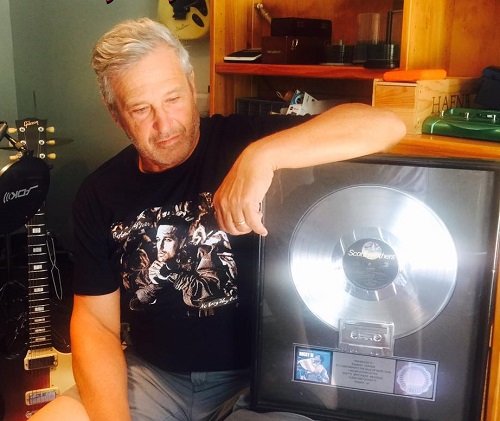
“Some things are worth fighting for…”
Bayonne, New Jersey native Robert Tepper would have been happy if Rocky IV only played 30 seconds of his song “No Easy Way Out.” He’d soon find out the joke was on him the whole time.
“The movie comes out. I’m with my second wife and we’re staying at the Westwood Marquis [in Los Angeles]. We go to the opening. All of a sudden, the song comes on and I’m like, ‘OK … OK … Holy shit!’” Tepper recalls. “(Stallone) started the song from the beginning. Usually in the movie you’re either like a minute; maybe you get 30 seconds; maybe somebody is on the phone and they’re playing your song. He plays the whole entire tune from the beginning to the fade, and he builds this montage around it.”
“My mind is slowly being blown as we keep going through this thing. You can feel the people getting very, very excited about this part of the movie,” he adds. “It was pretty thrilling sitting there and having that experience. I’d be a liar if I said it wasn’t.”
At the time, Tepper said he had “no idea” initially how his song will be used in Rocky IV. The song is featured during the film’s pivotal plot crossroads. Rocky Balboa has just committed to fighting Ivan Drago (in the wake of Apollo Creed’s death at Drago’s hands). Balboa’s wife Adrian implores him to stay back. A cathartic car ride has Balboa thinking about his future while also reflecting on his past, all the way back to the first Rocky film.
Around the time Stallone reaches out to request the song, Tepper — best known as co-writer on the eternal ‘80s hit “Into the Night” with the late Benny Mardones — was getting ready to release his eponymous debut album on Scotti Bros.
“I’m doing my first record. I don’t know what’s going to happen with this record. Most peoples’ first records go right in the toilet. I’ve got a deal on Scotti Bros., which is not the best, but the hands of fate come in and turn things around for me,” he told me. “They have a meeting with Stallone. I’m not part of this meeting in any way shape or form. They start playing him music and (Stallone) falls in love with “No Easy Way Out.””
Tepper adds that the interest surrounding his song is initially bittersweet.
“The song comes out and I’m trying to get my album out there. They’re saying, ‘We can’t release your record, man. We can’t release your record until your song comes out on the soundtrack,’” he said. “I’m like, ‘Really? C’mon it’s done, let’s get going. Let’s do something,’ and they’re going no. I had to wait.”
But Tepper is quick to point out that when Rocky IV is released “things have never been the same.”
“I was very lucky to get a song that was part of a franchise,” he said. “Until Twitter and the Internet came along, I had no idea that people really liked the song that much. I really didn’t. It was something I did, and I had moved on.”
While the lyrics, when paired with Stallone’s narrative, seem to reflect there being no shortcuts around tough decisions, “No Easy Way Out” is actually about Tepper’s first divorce.
“The song is about the breakup of my marriage. I wrote those lyrics in my kitchen in New York City on 94th Street between Lexington and 3rd [Avenue],” he told me. “What’s really cool about it is Stallone had the wherewithal to recognize it when he heard it and grab onto it. The fact that Stallone grabbed onto it was phenomenal.”
“It wasn’t like I hadn’t done anything, but basically I hadn’t done anything. This is my first foray into being an artist, you know,” he adds. “It was pretty phenomenal sitting there and watching that song go by. There’s something so powerful when film and music kind of … come together. It takes the music to another level and it becomes impregnated in peoples’ brains in a certain way.”
The film’s success would help propel Tepper’s song into the Billboard Top 40. While an accompanying, emotionally charged music video, directed by Dominic Sena, would receive heavy rotation on MTV, Tepper would unfortunately not find himself in the throes of superstardom.
“I was a little nuts back then. I would sing it out full voice every time I did that video because I really wanted people to feel the emotion of the song. Some people think it’s corny and ‘80s bullshit and things like that, but I think it’s a good video,” he said. “All the sugar around it happened. I got the publicity; people wanted to see me … It was just weird how it turned out. I was on Scotti Bros. which was on CBS. I wasn’t a priority for CBS. They had a Janet Jackson record and a Fabulous Thunderbirds record. There were a lot of things that came before me.”
An engineer still releasing new music, Tepper says he remains proud of “No Easy Way Out” and its inclusion in a cinematic franchise that keeps thriving, even in the 21st century.
“I feel really fortunate to be part of a franchise. Franchises are great, and I’m grateful about that,” he says. “I had great musicians on that record. I had a great producer, and I had a big-time movie. It all sort of worked really well.”
***
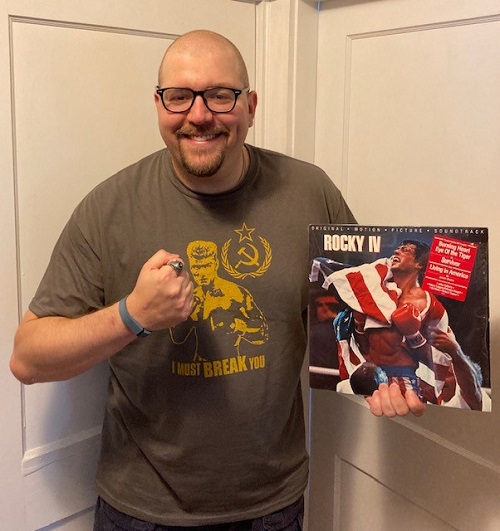
Share your feedback and suggestions for future columns with Ira at vinylconfessions84@gmail.com. Ira’s new book, “Hello, Honey, It’s Me”: The Story of Harry Chapin, is available for purchase here.


